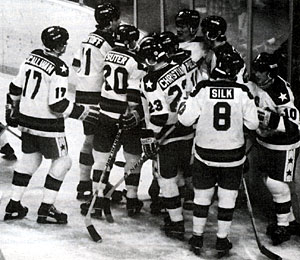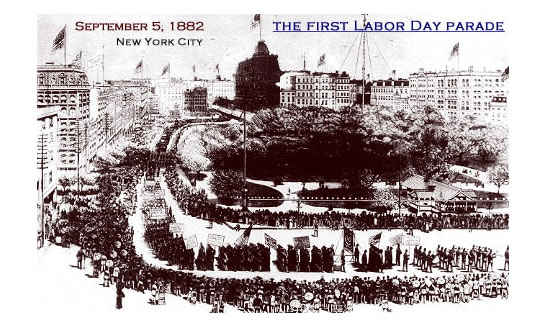Forty-five plus years ago, Detroit began its rapid decline into becoming a real-life Gotham City. With the riots of the late 60’s, middle and upper-class Detroiters began to flee the city for the suburbs. As the suburbs grew and the city’s population declined, businesses also moved to the suburbs to be closer to their target audiences. Coleman Young assumed control of Detroit as its mayor in the 70’s and embarked on a long reign that pillaged the city coffers and bred corruption at all levels. Then in the late-70’s and early-80’s the auto industry struggled. As imported vehicles more aggressively marketed for the American consumer and the country faced recession, sales of American-built automobiles dropped, assembly lines slowed, workers lost their jobs. Entire blocks of the city’s residential neighborhoods became empty, abandoned, or badly run down.
Crime increased. Many abandoned homes burned in the infamous “Devil’s night” fires of the late-80’s and early-90’s. The population of this once great city dropped, first below one million, then below 900,000, and then below 800,000. With each population decline, there was a loss of government funding; funding needed to support the city infrastructure. Roads became pot-holed, sidewalks crumbled, empty lots became overgrown, and abandoned houses were left to crumble where they stood. Finally, Detroit filed for bankruptcy; the first major metropolitan city to do so. That case is still working its way through the courts.
Through it all, however, a determined core group of visionary businesspeople and residents fought to bring Detroit back. When the rest of us (myself included) thought that Detroit was deeply into a spiral that it would never break free of, this group held within their hearts three key tenets of motivation: belief that Detroit could change; commitment to being an active part of that change; and hope that others would witness their efforts, see the benefit, and join the movement.
I was in Detroit this weekend. Those visionaries have much to be proud of. People with names like Karmanos, Ilitch, Gilbert, Hantz, Stroh, Ford…and the list goes on. They had a vision and they persevered over long years. They had ties to the community and refused to see it die. They trod bleak paths and swam difficult waters, but without a doubt Detroit is once again on the rise. Quite literally, a phoenix rising from the ashes.
One of the greatest names behind the resurgence of Detroit is Ilitch; Mike Ilitch to be precise. The founder and patriarch of the Little Caesar’s Pizza empire, Ilitch began his return to Detroit by bringing his company headquarters downtown. Purchasing and lavishly renovating the Fox Theatre on Detroit’s Woodward Avenue, Ilitch launched a campaign to revitalize Detroit that continues to surge today.
Detroit may have the famous moniker “the Motor City,” but Detroit is a sports town, and much of its fingernail grip on the edge of the pit of despair and a large part of its climb out has been its sports. Who owns Detroit’s two most-storied sports franchises? The Ilitch Family.
To look at the story of the Detroit Tigers is to read the names of baseball history. Names like Ty Cobb, Al Kaline, Hank Greenberg, and Denny McClain. Detroit is proud of their Tigers and proud of that history, and in the late-90’s Ilitch constructed Comerica Park, a shrine to that past and a temple to the Tigers’ future. Built on Woodward, directly across the street from the Fox Theatre and the Little Caesar’s headquarters, Comerica Park became yet another foundation upon which Detroit would grow. Check out the Tigers at: http://www.detroit.tigers.mlb.com.
The Detroit Red Wings, is the second jewel in the Ilitch sports crown. One of the original six NHL hockey teams, the Red Wings currently hold court at Joe Louis Arena on Detroit’s river front. With an equally-storied past that includes the likes of Gordie Howe, Ted Lindsay, Terry Sawchuk, and Steve Yzerman, the Red Wings, too, will soon have a new home in what is being called District Detroit. The District Detroit will include a 20,000 seat hockey arena, and encompass 45 blocks of
entertainment and residential space. Also on Woodward Avenue, just across I-375 from Comerica Park, District Detroit will provide a continuous, walkable area tying the downtown sports and entertainment districts together. For more information on District Detroit: http://www.districtdetroit.com/ More on the Red Wings here: http://www.redwings.nhl.com.
Just down Woodward Avenue from District Detroit, Comerica Park, and the Fox Theater lies Ford Field, home of the Detroit Lions. Opened in 2002, Ford Field brought the Lions back to Detroit from Pontiac, Michigan where they had played in
the Silverdome for several years. With 65,000 seats for football (and expandable to just over 80,000 for other events), this state of the art arena was home to Super Bowl XL in 2006. With the Lions owned by the Ford family – yes, the automotive Ford’s – Ford Motor Corporation purchased the naming rights for the stadium, tying the team and the stadium back to the automotive legacy of the city.
On the water front in downtown Detroit stands a large building constructed of five glass towers. With the center tower clocking in at over 80-stories tall, it is the most visible building on the Detroit skyline. Built in the 1970’s, the Renaissance Center was supposed to be just that: the beginning of Detroit’s renaissance. It was not. The
city’s decline and struggles continued well beyond the construction of the “RenCen” as it is known. Fast forward 30+ years. The RenCen is now the home of General Motors headquarters. The center tower boasts a Marriott Hotel and the 82nd floor is a restaurant and lounge that slowly moves, so that if you spend an hour there, you will have an opportunity to view the 360 degree panorama that encompasses Detroit, and Windsor, Ontario, Canada across the Detroit River. The lower level of the building is home to shops and a food court. You can also walk around and view all the current GM car models that are spaced throughout the lower floor.
General Motors (and others) has also committed to renovating and cleaning up the Detroit water front. A beautiful river walk has been constructed. Along its length you will pass art, murals, natural areas, picnic areas, a carousel, and a marina. It passes through William Milliken State Park and continues on to Belle Isle. While walking, jogging, or biking the path one can watch pleasure boaters as well as great lakes freighters sail that waters of the Detroit River, either headed up to Lake Huron, or down to Lake Erie.
Three casino’s have made Detroit their home: the MGM Grand, the Greektown Casino, and the Motor City Casino. With their entertainment venues and their hotels, they, like the sports team and river walk, are giving people reasons to again come back to Detroit. People who will find that they just might love the city, and people whose money spent in the city continues to help the climb upward.
General Motors is not the only company to have brought their headquarters back to Detroit. In 2003, Peter Karmanos, CEO and Founder of Compuware relocated his corporate headquarters downtown. Seven years later in 2010, Dan Gilbert brought his company, QuickenLoans, to Detroit also. Gilbert and QuickenLoans alone have committed over $1 Billion to improving Detroit, as a place to do business, a place to entertain, and a place to live.
Others are making differences in their own ways. After years of decline, decay, and crime, Detroit now boasts over 45,000 vacant and abandoned buildings and lots. The vast majority of these are old residences. The neighborhoods where these homes stand are blighted. Even though people continue to live on many of the homes, they often live next to abandoned buildings, burned out building, and weedy, overgrown lots. These provide havens for those who would commit crimes and for drug use. Enter John Hantz, President & CEO of The Hantz Group, a financial planning firm with multiple officers throughout Michigan. Hantz and many of his top executives choose to make Detroit their home. Everyday, they drive past these blighted areas, and from this an idea was born. To purchase vacant lots from the city, tear down abandoned homes if they existed on the lots, and plant trees. This would return vacant land to the tax rolls. It would clean up blight. It would beautify, and it would instill pride in neighborhoods again.
In Spring, 2014, with over 1,000 volunteers, Hantz Woodlands planted over 15,000 hardwood trees on Detroit’s east side. http://www.hantzfarmsdetroit.com/
These examples are only a very few of the dozens of examples being set in Detroit each and every day. Members of the community working toward the purpose of rebuilding the community. They are succeeding. For the naysayers, such as I was until more recently, shame on us. Detroit is resilient and Detroit will overcome. They are proving it every single day.
















